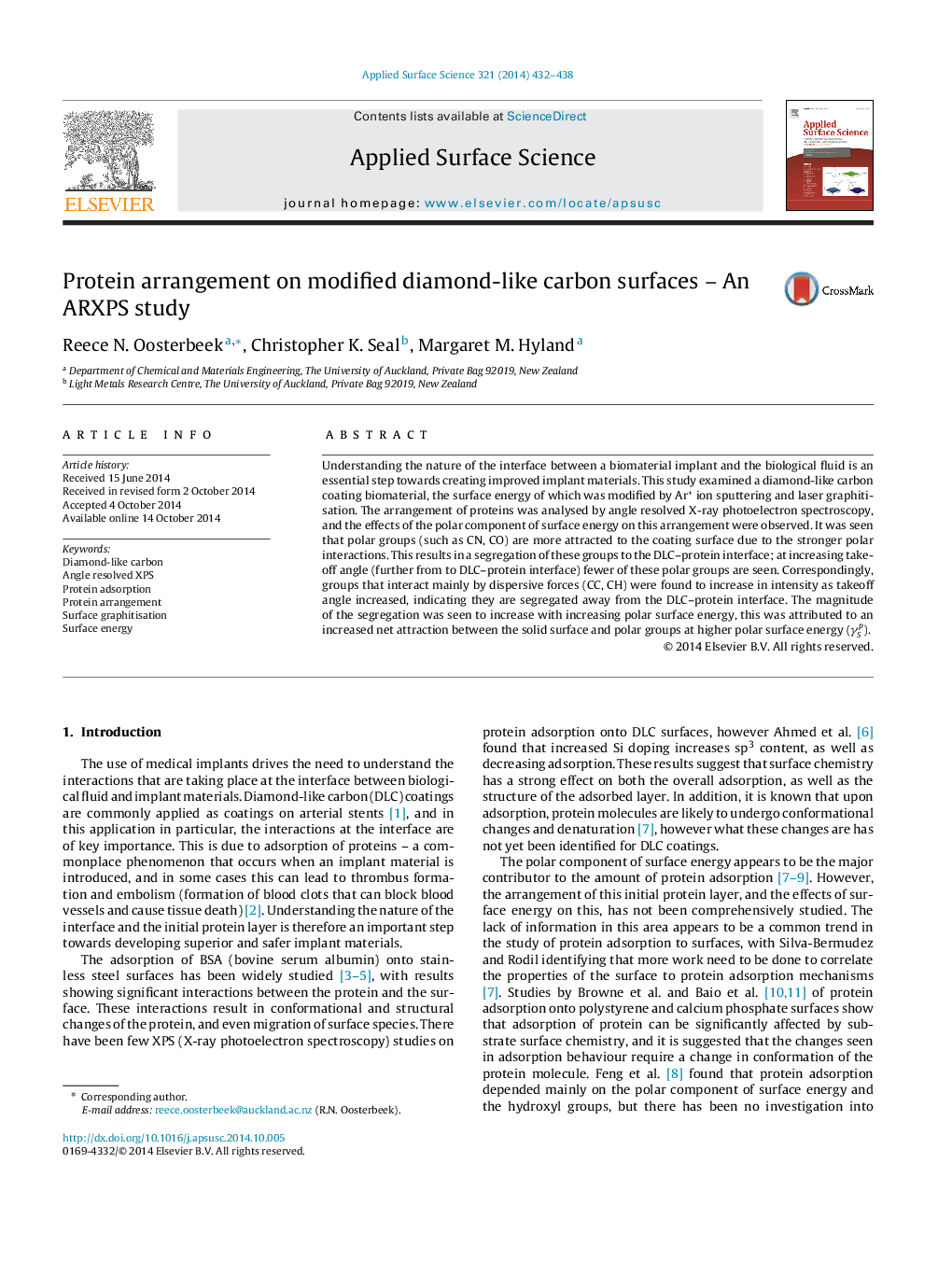| Article ID | Journal | Published Year | Pages | File Type |
|---|---|---|---|---|
| 5360015 | Applied Surface Science | 2014 | 7 Pages |
Abstract
Understanding the nature of the interface between a biomaterial implant and the biological fluid is an essential step towards creating improved implant materials. This study examined a diamond-like carbon coating biomaterial, the surface energy of which was modified by Ar+ ion sputtering and laser graphitisation. The arrangement of proteins was analysed by angle resolved X-ray photoelectron spectroscopy, and the effects of the polar component of surface energy on this arrangement were observed. It was seen that polar groups (such as CN, CO) are more attracted to the coating surface due to the stronger polar interactions. This results in a segregation of these groups to the DLC-protein interface; at increasing takeoff angle (further from to DLC-protein interface) fewer of these polar groups are seen. Correspondingly, groups that interact mainly by dispersive forces (CC, CH) were found to increase in intensity as takeoff angle increased, indicating they are segregated away from the DLC-protein interface. The magnitude of the segregation was seen to increase with increasing polar surface energy, this was attributed to an increased net attraction between the solid surface and polar groups at higher polar surface energy (γSp).
Related Topics
Physical Sciences and Engineering
Chemistry
Physical and Theoretical Chemistry
Authors
Reece N. Oosterbeek, Christopher K. Seal, Margaret M. Hyland,
